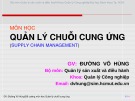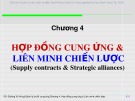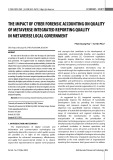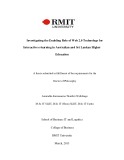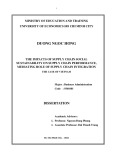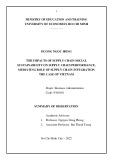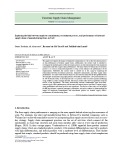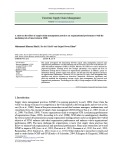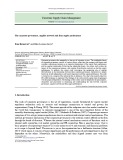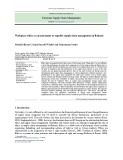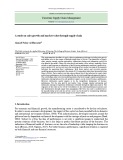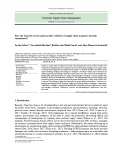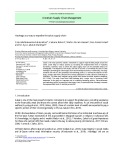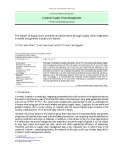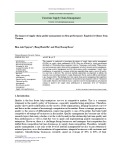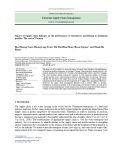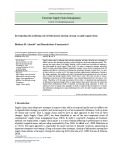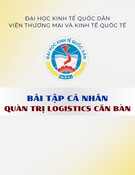
* Corresponding author
E-mail address:Omar.alansari@hotmail.com (O. I. A. Alansaari)
© 2019 by the authors; licensee Growing Science, Canada
doi: 10.5267/j.uscm.2018.10.002
Uncertain Supply Chain Management 7 (2019) 237–250
Contents lists available at GrowingScience
Uncertain Supply Chain Management
homepage: www.GrowingScience.com/uscm
Exploring the link between employee commitment, recruitment process, and performance of internal
supply chain of manufacturing firms in UAE
Omar Ibrahim Ali Alansaaria*, Rosman bin Md Yusoffa and Fadillah binti Ismaila
aUniversiti Tun Hussein On Malaysia (UTHM), Malaysia
C H R O N I C L E A B S T R A C T
Article history:
Received June 25, 2018
Accepted September 29 2018
Available online
October 5 2018
This paper investigates the impact of employee commitment as well as the recruitment process
on the performance of internal supply chain. Additionally, the current study is intended to
investigate the mediating role of the recruitment process on the relationship between employee
commitment and firm supply chain performance. The main objective behind any recruitment
process is to recruit committed employees to help a firm enhance the performance of the
organizations. Therefore, the current study is carried out to fill a gap by exploring the
relationship between recruitment processes, employee commitment, and firm supply chain
performance. To achieve the research objective, the study has analyzed the data gathered from
284 mangers of manufacturing organizations of United Arab Emirates. 284 questionnaires out
of 550 are found useful, so the response rate is 52 percent. The structural equation modelling
using AMOS is used to analyze the data. The results of the study show an agreement with the
results of the hypotheses. The direct relationship between commitment types and firms’
internal supply chain performance, and between recruitment process and firms’ internal supply
chain performance are found positive and significant. The results of the study will be helpful
for HR practitioners, operation managers, researchers, and policy makers in understanding the
impact of employee commitments and recruitment process on internal supply chains’
performance of manufacturing firms.
ensee Growin
g
Science, Canada
by
the authors; lic9© 201
Keywords:
Internal supply Chain
Recruitment process
Employee Commitment
United Arab Emirates
1. Introduction
The firm supply chain performance is merging as the main agenda behind achieving the economies of
scale. For example, top retail and manufacturing firms in fortune five hundred companies such as
Walmart have achieved remarkable success by incorporating firm supply success factors such as cross-
doc strategy. Supply chain management practices are the set of activities which connect all the
stakeholders in chain type structure and each chain member adds value at every step of production
(Hugos, 2018). In their vintage papers, Vonderembse et al. (2006) appealed three product cantered
supply chains which are standard products: products with minimal differentiation, innovative products
with high differentiation, and hybrid products with a moderate level of differentiation. They further
argued that simple, standard products should be produced using lean supply chain which emphasizes






